(Pain Management)
Thought I’d re-post this:
It’s autumn and most of your neighbours who have pools are preparing them for winter. In the northern states where freezing temperatures will soon be showing up right on schedule, they’re draining and cleaning them. In the more southern states where fall and winter temperatures are much milder (but still pretty doggone chilly), they’re at least cleaning, shocking and covering them so that they will be easier to re-open next season. But what if you have a real need for the therapeutic advantages your pool offers? It’s your pool; why not use it year ’round?
Granted, using your pool year ’round means you won’t get that seasonal vacation from pool maintenance that others enjoy; it also means you’ll want to consult an expert about how you should care for your pool during the fall and winter seasons (cooler to colder weather may require an adjustment to your pool treatment chemical ratios and schedule). Be that as it may, if you have a medical prognosis that’s dependent on water therapy, it is well worth that extra effort.
If you have a medical condition that can be helped with hydrotherapy or aquatic therapy, wouldn’t it be more convenient if you could do it in your own home…in your own pool, all year around, rather than having to travel to your health care facility or physical rehabilitation center? You can, with just a little preparation that is simple and cost effective, even if you’re on a fixed income. But before addressing the “how to”, let’s discuss some of the ways that your pool can help you with, say, pain management and some disabilities.
The use of spas, whirlpools, Jacuzzis and regular swimming pools has played a large part in treatments for pain, weight issues and muscle injuries, just to name a few, for at least 2000 years! There are also times when water therapies can be used to treat symptoms of mental or emotional stress, sleep disorders and even pain caused by chronic or intermittent inflammation. In some cases these therapies can be used alone while in others, a combination of medication and therapy would apply.
WATER VS “LAND BASED” EXERCISES
When a medical condition includes weakness or instability of the joints, the resulting inability or difficulty of movement can cause muscle degeneration, or atrophy. It is for this reason that doctors and surgeons will oftentimes include exercise, or “physical rehabilitation”, as part of the patient’s treatment plan. Fortunately, most doctors and therapists have finally realized that, in order to ease pain, reduce inflammation and avoid stress to an injury or disability involving the joints, some kind of low impact, aerobic type of exercise is preferable.
In other words, patients who are recovering from or adjusting to injuries or disabilities are eased, rather than thrust, into “normal” physical activity.
On their website, Health South indicates that hydro-, aquatic or swim therapy can be useful for the treatment of:
- Arthritis management/joint pain
- Athletic/cardiovascular training
- Musculoskeletal disorders
- Chronic back pain and lumbar stabilization
- Foot, ankle or knee pain
- Spinal cord injuries
- Amputees
- Stroke
- Brain Injury
A professor at the University of Hawaii and the director of the Aquatics Research Laboratory,
Dr. Jan Prins, states, “…conditions that are exacerbated by gravity, i.e. weight-bearing, respond well in the water.” Dr. Prins adds the following conditions to those which can be helped best by ‘aquatherapy’:
-
Orthopedic conditions associated with the major joints: Neck, back, shoulder, hip, and knee injuries
-
Recovery from work injuries and auto accidents
-
Hip & knee replacement
-
Recovery from CVA’s (stroke) and neurological injuries which includes “balance training” for fall prevention.
-
Rheumatological conditions – including Arthritis, Fibromyalgia
-
Diabetes – exercising with a reduction in joint trauma.
-
Athletic injuries.
-
Osteoporosis.
-
Conditions exacerbated by changes in body alignment during pregnancy.
-
Injuries that are either recent, or old, but still cause pain and discomfort.
The Mayo Clinic weighs in on the subject with a slideshow of exercises that can be done in the pool, while the Johns Hopkins Arthritis Center’s article offers an in-depth discussion on rehabilitation management. Yet another article (by Mary Essert, B.A., ATRIC, creator of aquatic programs for patients who have disabilities and conditions such as arthritis, fibromyalgia, breast cancer, Lymphedema, Post Polio Syndrome and other chronic pain issues) is shared on lymphedema specialist, Joachim Zuther’s, blog, which explains how this type of therapy works.
In the pool, the body is buoyant, gravity is greatly reduced and, as such, there is no weight stress on bones nor joints. For those with arthritis, musculoskeletal and neuropathic disabilities, swimming or performing other aerobic exercises in a pool can even help to increase flexibility and build muscles which support posture, improve cardiovascular conditioning, respiration and blood circulation and can also help to reduce excess weight which can aggravate pain in the joints.
Water temperature during aquatic therapy varies, though. For instance, who hasn’t been told to apply an ice pack to a pulled muscle, or to use a cool compress when suffering from a migraine or swollen sinuses? The reason, of course, is that “cool reduces inflammation”. For example, in the case of someone who is suffering from arthritis inflamed knees after standing in one place in a cashier’s line for 10 minutes, an ice pack and elevation is just the ticket…or a good 20 minute soak in a cool pool.
On the other hand, stiff muscles or joints upon awakening or because of either cold weather or high barometric pressure would call for the warm, soothing water temperature of soak in the tub, Jacuzzi or a nice long shower…or even a few laps in a heated pool.
There are a number of ways to regulate the temperature of your pool water. If you live in the more southern regions and need to maintain cooler water (for late spring to late summer) you’ll want to have either an awning or strategically placed plantings to shade your pool when the sun is at its hottest. For an above ground pool, even a portable “easy up” or gazebo can help, as you can move it to follow the sun’s changing angle.
In order to heat your pool for use late in the season you can either outfit it with a manufactured heater (more than likely the case if you live in the north) or you can use passive solar energy, which embraces the idea that light reflects heat, dark absorbs it. These solutions will cost you next to nothing, as simple DIY projects.
The easiest way to draw heat to your pool is to use a “solar blanket”. No, it’s not like what you use on your bed; in fact, solar blankets are generally made out of vinyl. Solar blankets for an in ground pool can range from $75+/-, to $500 and up, depending on construction. Or, you can make your own.
Vinyl liners for ponds are sold either pre-measured or can be purchased from the roll. For an investment of between about $30-$40 you can purchase lengths of the least mil (thickness)and bond or tape them together to accommodate the width of your pool. Because this material is usually black, laid over your pool it will draw and trap a lot of heat within about 4 hours. The thicker it is, the more heat will be captured. Throw all of your flotation toys, noodles and lounge floats in before laying it across the pool and you have added an insulating layer of air for your in ground pool!
Do the same for the above ground pool, even if you already have a pool cover. Just remember that an above ground pool is not insulated on the sides. In this case, it’s possible to purchase bubble wrap, spray paint the smooth side with flat (matte) black latex paint, fasten each section together wrap the pool or, as some have done with their rigid sided pools, use styrofoam panels which can be held in place with cotton twine or rope. These can be crafted in such a way that they absolutely will not look tacky.
One last word: don’t ever take it upon yourself to begin a physical therapy regime without consulting your PCP or other health care professional. Insuring your quality of life is far too important. Once you get the ‘go ahead’ from your doctor, work very closely with your physical therapist. It may be your pool, but it’s your therapist livelihood!



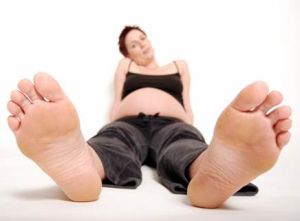

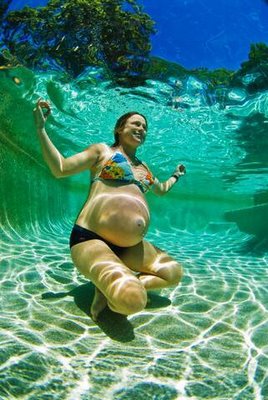

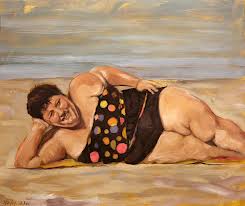
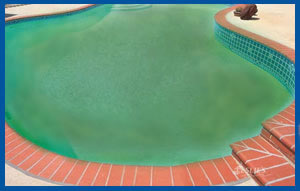
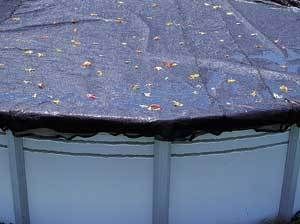


 The best way to avoid sun-stroke is to prepare your outdoor area first, by making sure you have a place to cool down quickly (and that doesn’t mean just having a pool handy) and by paying attention to the signs that your body is giving you at all times, whether it’s telling you that you need to drink something, sit in the shade, slow down or get out of the sun. There may not be anyone else who will remember these things for you…It’s up to you!
The best way to avoid sun-stroke is to prepare your outdoor area first, by making sure you have a place to cool down quickly (and that doesn’t mean just having a pool handy) and by paying attention to the signs that your body is giving you at all times, whether it’s telling you that you need to drink something, sit in the shade, slow down or get out of the sun. There may not be anyone else who will remember these things for you…It’s up to you! By the way, don’t forget your pets who may share your fun-in-the-sun recreation! Dogs and cats (and guinea pigs, rabbits, etc) all wear fur coats year ’round and they have no way of cooling down except by panting. Because of this, domestic animals can be prone to sun or heat stroke as well, only it’s much easier to turn deadly for them.
By the way, don’t forget your pets who may share your fun-in-the-sun recreation! Dogs and cats (and guinea pigs, rabbits, etc) all wear fur coats year ’round and they have no way of cooling down except by panting. Because of this, domestic animals can be prone to sun or heat stroke as well, only it’s much easier to turn deadly for them.


 One neighbour, though, was just sitting on the edge of his pool, bundled up in a blanket…just around his shoulders and ears…sitting on the top step in the water, while steam arose from the surface in lazy wisps like smoke. It was cool enough outside that one could see one’s breath and I wondered if perhaps he was part of some ‘Polar Bear Bathing Club’, down from up north or something.
One neighbour, though, was just sitting on the edge of his pool, bundled up in a blanket…just around his shoulders and ears…sitting on the top step in the water, while steam arose from the surface in lazy wisps like smoke. It was cool enough outside that one could see one’s breath and I wondered if perhaps he was part of some ‘Polar Bear Bathing Club’, down from up north or something.
